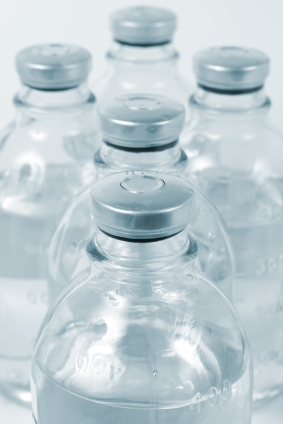Depression and Resilience Linked to Norepinephrine
Scientists have known for some time that heightened activity of dopaminergic neurons (neurons in the midbrain that contain the neurotransmitter dopamine) can make people vulnerable to depression. New research in animals suggests for the first time that noradrenergic neurons (those that contain the neurotransmitter norepinephrine) control the activity of dopaminergic neurons and that these noradrenergic neurons can make the difference between vulnerability to depression or resilience to stress. The research, published by Elsa Isingrini and colleagues in the journal Nature Neuroscience in 2015, showed that animals that cannot release norepinephrine are vulnerable to depression following chronic stress, but increasing the production of norepinephrine increases the animals’ resilience and reduces depression.
These findings may open up new avenues to treatment that target norepinephrine rather than or in addition to dopamine or serotonin, which is targeted by SSRI antidepressants, or selective serotonin reuptake inhibitors.
Exercise Helpful for Mood Disorders
 While past research on mood disorders has targeted structural and functional abnormalities in the brain, newer research has considered targets such as inflammation, metabolism, and cell resilience. Exercise can have positive effects on systems that regulate metabolism, immune function, and cellular respiration, and therefore improve affective and cognitive difficulties.
While past research on mood disorders has targeted structural and functional abnormalities in the brain, newer research has considered targets such as inflammation, metabolism, and cell resilience. Exercise can have positive effects on systems that regulate metabolism, immune function, and cellular respiration, and therefore improve affective and cognitive difficulties.
At the 2014 meeting of the International Society for Bipolar Disorders, Mohammad Alsuwaidan presented a meta-analysis of the effects of exercise in mood disorders gleaned from English-language studies between 1966 and July 2008. Exercise increased brain norepinephrine, serotonin, and phenylethanolamine (PEA).
Alsuwaidan believes runner’s high, the feelings of euphoria people often experience after strenuous exercise, may not be linked to opiate (or endorphin) release, as most people believe, but instead to release of PEA or the cannabinoid anandamide, which activates CB 1 cannabinoid receptors, decreases GABA, and increases dopamine in the nucleus accumbens, the reward center of the brain.
Exercise also increases neurogenesis and the production of brain-derived neurotrophic factor (BDNF), which supports the growth of neurons and synapses. Marathon runners also have a post-race elevation in the anti-inflammatory cytokines IL-10 and IL-1Ra.
In people who are out of shape, exercise increases oxidative stress and other toxicities that do not occur with in those who exercise more regularly. Alsuwaidan extolls the benefits of high impact exercise five to seven times per week, and engaging a trainer to encourage exercise. Four minutes of intense exercise (such that you sweat and are not able to talk) is about equal to 45 minutes of mild exercise.
New Research on Ketamine
 The drug ketamine can produce antidepressant effects within hours when administered intravenously.
The drug ketamine can produce antidepressant effects within hours when administered intravenously.
Finding an Appropriate Control
Comparing ketamine to placebo has challenges because ketamine produces mild dissociative effects (such as a feeling of distance from reality) that are noticeable to patients. At the 2013 meeting of the Society of Biological Psychiatry, James W. Murrough and collaborators at the Mount Sinai School of Medicine reported their findings from the first controlled trial of intravenous ketamine in depression that uses an active control, the short-acting benzodiazepine midazolam, which has sedative effects and decreases anxiety, but is not known as an antidepressant. On virtually all measures intravenous ketamine was a more effective antidepressant following 2 infusions per week.
These data help dispel one of the criticisms of intravenous ketamine, that studies of the drug have not been sufficiently blinded (when patients and medical staff are kept from knowing which patients receive an active treatment and which are in the placebo control group) and that the lack of an appropriate active placebo contributed to the dramatic findings about ketamine’s antidepressant effects. It now appears that these criticisms have been appropriately answered and that intravenous ketamine is highly effective not only in comparison to placebo but also to an active comparator.
This research was presented as a poster at the meeting and published as abstract #442 in the meeting supplement to the journal Biological Psychiatry, Volume 73, Number 9S, and was also published in the Archives of General Psychiatry in 2013.
Slowing Down Ketamine Infusions to Reduce Side Effects
Ketamine is commonly given in 40-minute intravenous infusions. Timothy Lineberry from the Mayo Clinic reported in Abstract #313 from the meeting that slower infusions of ketamine over 100 minutes were also effective in producing antidepressant effects in patients with treatment-resistant depression. Lineberry’s research group used the slower infusion in order to increase safety and decrease side effects, such as the dissociative effects discussed above. In the 10 patients the group studied, they observed a response rate of 80% and a remission rate of 50% (similar to ketamine’s effects with 40-minute infusions).
Family or Personal History of Alcohol Dependence Predicts Positive Response to Ketamine in Depression
Mark J. Niciu and collaborators at the NIMH reported in Abstract #326 that a personal or family history of alcohol dependence predicted a positive response to IV ketamine in patients with unipolar depression.
Ketamine Acts on Monoamines in Addition to Glutamate
Ketamine’s primary action in the nervous system is to block glutamate NMDA receptors in the brain. In addition to its effects on glutamate, it may also affect the monoamines norepinephrine and dopamine. Kareem S. El Iskandarani et al. reported in Abstract #333 that in a study of rats, ketamine increased the firing rate of norepinephrine neurons in a part of the brain called the locus coeruleus and also increased the number of spontaneous firing dopamine cells in the ventral tegmental area of the brain.
Editor’s Note: These data showing that ketamine increased the activity of two monoamines could help explain ketamine’s ability to induce rapid onset of antidepressant effects, in addition to its ability to immediately increase brain-derived neurotrophic factor (BDNF, important for long-term memory and the creation of new synapses) and to restore healthy mushroom-shaped spines on the dendrites of neurons in the prefrontal cortex.
Moclobemide May Help Depression and Post-Partum Blues
Monoamine oxidase inhibitors (MAO-Is) are a type of antidepressant that is often effective for people with anxious depression or comorbid panic attacks, especially when other antidepressants don’t work. This may be because MAO-Is work on all three neurotransmitter systems implicated in depression: dopamine, norepinephrine, and serotonin.

In a recent study presented at the 65th Annual Scientific Convention of the Society of Biological Psychiatry, Julia Sacher et al. found that six weeks of therapeutic doses of the MAO-I moclobemide (at doses of 300 mg twice a day) significantly decreased monoamine oxidase A, as measured by PET scans in brain regions implicated in mood disorders. In a comparison of moclobemide, placebo, and the herbal preparation St. John’s Wort, only moclobemide had a significant effect. Read more


